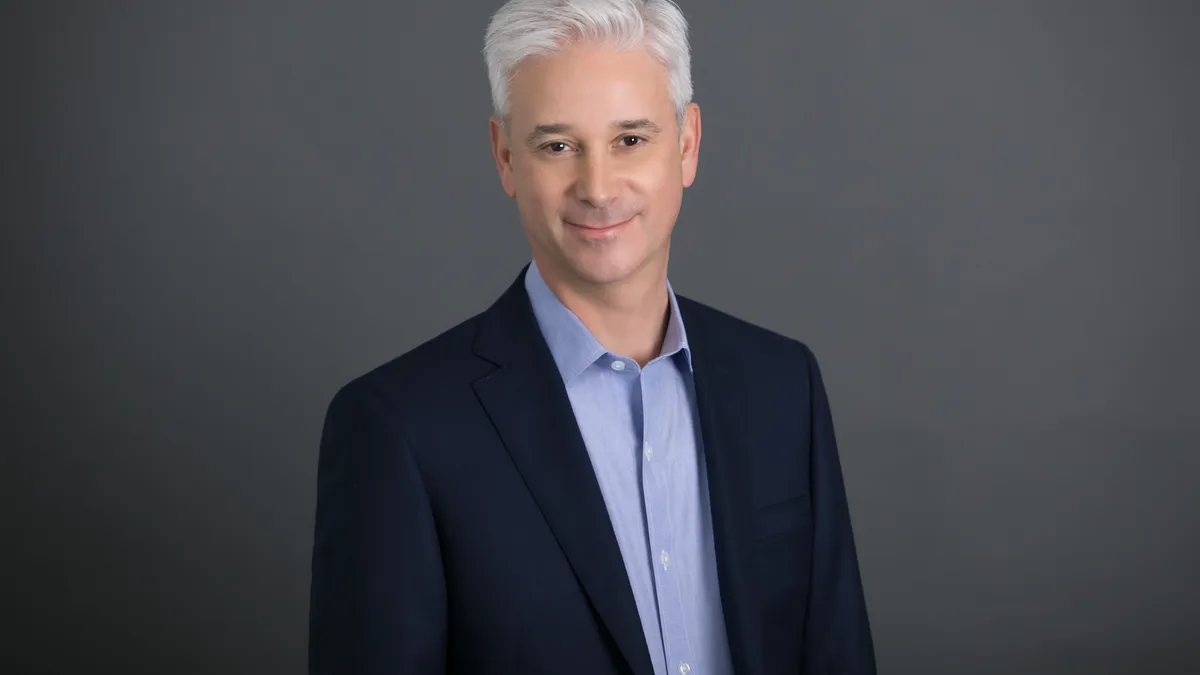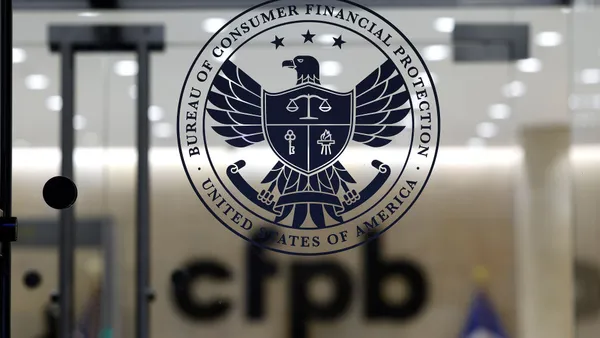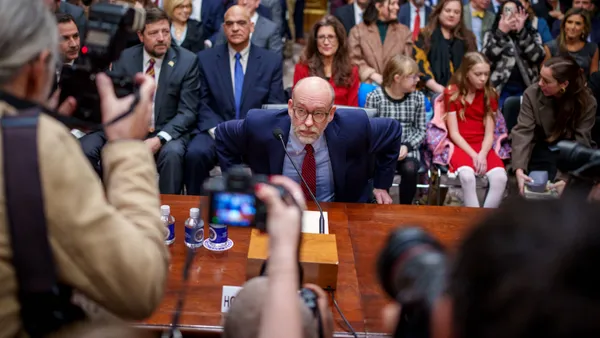Dive Brief:
- Wells Fargo is temporarily suspending a 2020 hiring policy that requires at least half the candidates interviewed for open positions paying $100,000 or more per year be women, nonwhite or otherwise disadvantaged, The New York Times reported Monday, citing a letter to employees from CEO Charlie Scharf.
- The bank’s “diverse slate” policy will relaunch in July, after a pause of several weeks, so leaders can “review our guidelines and processes” and, after the review is complete, “make adjustments … where appropriate,” Scharf wrote.
- Both Scharf, in Monday’s letter, and Kleber Santos — the bank’s head of diverse segments, representation and inclusion — have indicated the diverse slate policy has pushed progress. Roughly 42.3% of the bank’s hires in 2021 in jobs paying $100,000 or more were racially or ethnically diverse, compared with 36.9% in 2019, Santos told Business Insider.
Dive Insight:
In his letter Monday, Scharf clarified that the bank "will continue to actively seek diversity in hiring, even during this pause,” according to Bloomberg. “It does not mean that anyone at Wells Fargo should stop hiring or stop actively recruiting diverse candidates.”
The bank’s operating committee concluded there was “opportunity to improve our implementation around some of our activities," Scharf wrote Monday.
Wells Fargo’s policy on diverse hiring came under fire last month, when about a dozen current and former employees of the bank told The New York Times that Wells held phony job interviews for nonwhite and female job-seekers for positions that had already been offered to other candidates.
That report — along with ongoing racial disparity in mortgage refinancing at the bank, and a penalty over anti-money laundering violations — prompted Sen. Sherrod Brown, D-OH, to urge Scharf in a letter last week to “once and for all address Wells Fargo’s governance, risk management and hiring practices — weaknesses that have plagued the bank for almost a decade.”
Pausing the “diverse slate” policy will allow the bank to gain confidence that “the guidelines live up to their promise,” and that “hiring managers, senior leaders and recruiters fully understand how the guidelines should work,” Scharf wrote, according to The New York Times.
The pause comes less than a week after the bank published its first diversity and inclusion report, which found women comprised 44.3% of Wells Fargo’s executives last year. That’s up from 41.7% in 2020.
About 8.9% of the bank’s executives in 2021 were Black, according to the report, published Wednesday. That compares with 5.8% a year earlier. The proportion of executives who identified as Latinx jumped to 4.7% last year, from 3.9% in 2020. About 73.3% of Wells executives in 2021 were White.
The last figure puts Wells roughly on par with other big U.S.-based banks: About 77% of JPMorgan Chase executives are White, according to 2021 data seen by Business Insider. That proportion is 77.5% at Bank of America, data from last year shows. About 73% of Citi’s executives were White as of 2020, the outlet reported. By comparison, 60% of Americans identify as White, 19% as Hispanic/Latino, 13% as Black and 6% as Asian, according to Census Bureau data from July 2021.
"As I've said before, this is a marathon, not a sprint, so we know there is much work to do in the years ahead," Santos told Business Insider. "We need to continue to measure our progress in a data-driven way and engage diverse talent across the company, as well as outside stakeholders, to get their feedback and suggestions."
About 53% of Wells Fargo’s nonexecutive workers are women, and 45% are nonwhite, Business Insider reported.
Wells Fargo explicitly detailed its diverse slate policy in mid-2020, although a version of it had been in effect years earlier, according to The New York Times.
Scharf announced in June 2020 that the bank would aim to double Black leadership by 2025 and tie operating committee members’ diversity efforts to their pay.
But he drew blowback at the time for saying there was “a very limited pool of Black talent to recruit from.”
Sources for The New York Times' May story said fake interviews were logged in case bank regulators were to monitor the bank’s job-filling process for disparities along racial lines.
After the story published, bank officials told employees any fake interviews would have been isolated incidents that violated company policy.
"We're driving real progress, and we're working relentlessly. But we also know it takes time to create enduring change in any workplace," Santos told Business Insider last week.














